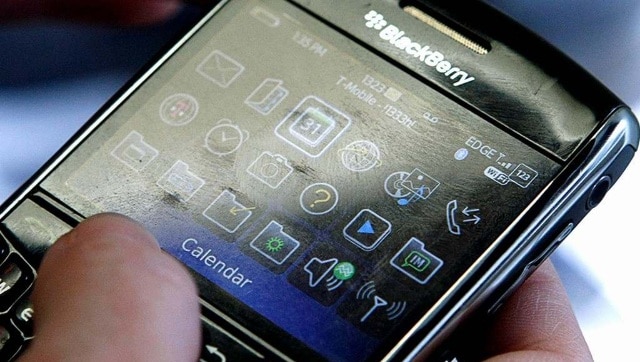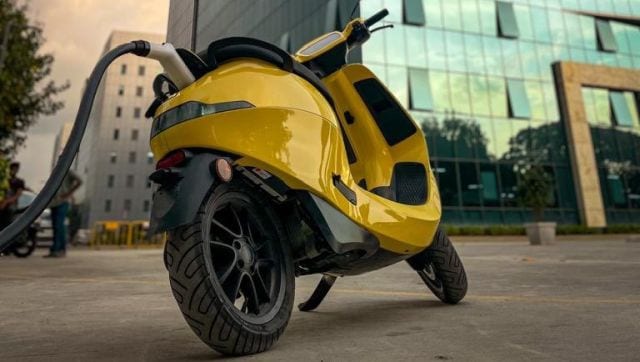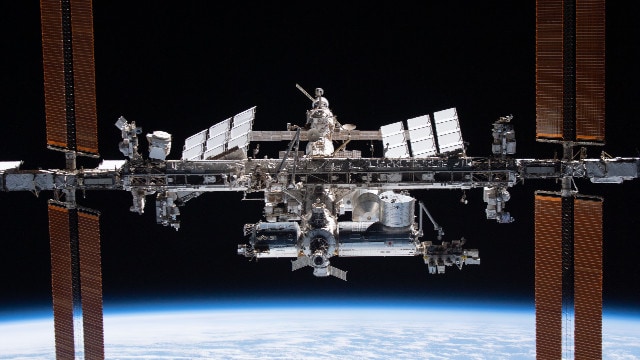For families of those with autism, lockdowns have led to a reversal of the therapy efforts be it speech, behavioural or sensory therapies
In April, Masarat, mother of 11-year-old Kamran, locked him inside a room for a day. She needed to go fetch medicine from the Srinagar market.
Kamran, who is autistic as well as differently-abled, spent the entire time banging on the door. He thought his father, who was in the next room, would let him out. But he didn’t.
His father, a government employee, had tested positive for COVID-19 and was in home quarantine.
“All I could do was cry. I did not want him to be infected too. He is more vulnerable than I am,” said Kamran’s father, speaking on condition of anonymity.
Autism is a neurodevelopmental condition that mainly affects communication. People with Autism Spectrum Disorder (ASD) exhibit repetitive and restricted patterns of behaviour.
Such children resist even minor changes in routine. For their families, lockdowns have led to a reversal of the therapy efforts, be it speech, behavioural or sensory therapies.

Occupational therapy tools lie unused at a special school in Kashmir. Image courtesy Mudasir Rawloo
“If there is a halt in autism treatment, it causes a reversal of everything you taught the child. Some even forget how to speak,” said Kulsuma, mother of an autistic child from Srinagar.
Kulsuma runs Exceptional Minds, a centre for autism and early intervention in Kashmir, where over 20 autistic children were enrolled in 2019.
The centre has been shut for almost two years.
“Parents are afraid of letting their children join classes,” she said. Such children hardly adhere to social distancing norms or keep masks on faces, she added.
Experts say autistic children have increased levels of ‘sensory sensitivity.’ Keeping masks on their faces or restricting such students to a single bench is a very tough task for therapists.

A therapist at a specialized treatment centre in Kashmir readying the props for a special class as schools gear up to open again. Image courtesy: Mudasir Rawloo
Making life predictable
As per United Nations Children’s Fund (UNICEF), which works for the development of children globally, it is imperative to introduce “new daily routines” for children with autism to relax during a lockdown.
It calls ‘roleplaying’ an effective tool to impart COVID education to such children.
It also suggests that rewarding a child once he imitates hygiene activity like hand washing will encourage them to repeat it.
“Every step of the daily routine should be predictable,” the UNICEF guideline reads.
Mona Rai, mother of an autistic child based in Hyderabad, seconds this. She said in her experience, autistic children and adults manage and cope well with a predictable routine.
“During lockdown, I ensured that my son’s breakfast and bath time was fixed and he would dress as he did for school,” Rai said. She added that she divided the day in a way that would task her son to help with household chores.
“Filling up bottles, putting clothes in the washing machine, assisting in hanging clothes, chopping vegetables, making beds, laying tables for meals, playtime with lego (plastic construction toys) besides watching TV as a group activity were some of the things we did at home,” Rai said.
Rai added there was also a fixed time for the entire family to take a walk in the evening. “We all then compared the steps we took,” she said, adding that this encourages many such children to walk more.
She said every such activity was rewarded with a cup of tea or cake. “This can be anything that’s a favourite of the child,” she added.
Absence of institutional help
For over a decade, Rohit Kumar from Andhra Pradesh, has been treated and educated at the National Institute for the Mentally Handicapped (NIMH) in Telangana. In April 2020, he fell sick and tested COVID positive.
“It was a jolt,” his sister, who is studying medicine in the Philippines, said. “The closing of his school immediate caused him more mental distress than the infection.” She said he did not touch food for three days.
She noted that Kumar regressed despite his food habits being drilled into him over the past two decades.
“I cannot imagine how things must be for autistic children who have never stepped foot in school or are barely trained,” she added.
Kumar’s mother then took it upon herself to feed him. “At times, she had to be harsh,” his sister said.

Kumar stacking shapes at his home during the lockdown. Image courtesy: Kumar’s sister
Compared to other developing nations, India has fewer institutional facilities for autistic children. US has annual surveys to determine autism rates as well as world-class management infrastructure. In India, the government runs a few mental health schools.
As a child, Kumar was one of the “lucky few” to have attended a facility like NIMH.
“In most rural areas, there is no early intervention for such children. Autism cannot be cured but its ill effects can be reduced with early therapies. Guidance from the government for such parents is scarce,” said a government-employed psychologist from Delhi speaking on condition of anonymity.
She added that despite a dedicated Ministry for Social Justice and a special department for the differently-abled, no wide-scale disorder-oriented awareness campaigns are launched.
Queries directed to the Ministry for Social Justice went unanswered.
Increased aggression and drug abuse.
Back in Srinagar, children like Kamran – never enrolled in any schools – have been homebound since the pandemic.
“He has become more aggressive lately. He would even hit me at times and cry later,” said Masarat.
Health experts say in most such cases, sedatives otherwise are seen as a last resort are being given to children to keep them calm. “Sadly, many parents think they are doing good but it harms them more. Therapies are much more effective,” a Delhi-based psychologist said.

At Kamran’s home, puzzles and therapy lie on a shelf. His parents say, he barely uses them after his school closed
Home schooling and online therapies
Kusuma, who is also certified in the art and play-based therapy for autistic children, said parents should create a school-like environment in homes so children don’t feel disconnected.
“For my son, I have kept at home all the equipment to keep him engaged,” she said, adding that online schooling of severely autistic children is difficult.

Colourful balls at the home of an autistic child in Kashmir. Image courtesy Mudasir Rawloo
She said people with ASD or autism spectrum disorder fall into three categories: mild, moderate, and severe. “The severe are more hyperactive and are more susceptible to stress when introduced with a change,” she said.
She added that a school-like atmosphere at home reduces scope of confusion for them.
Most of the therapists spoken to for this piece said that only the mildly autistic children could be given therapies online. They said, moderate and severely autistic ones are ‘intolerant’ to staring at a screen for long consistently.

Empty occupational therapy rooms at a special school in Jammu division. Image courtesy: Mudasir Rawloo
Dr Bhavna Barmi, a senior psychologist from Delhi, is the founder of Psycare mental health services. Dr Barmi said parents have a bigger role to play when it comes to home-schooling such children.
She said that the pandemic has mainly led to “anxiety, depression, Attention Deficit Hyperactivity Disorder (ADHD) and worsening of communication skills among autistic children”.
She attributed these ill effects not directly to COVID but the effect the pandemic has had on the parents and therapists.
“Emotional and physical health of parents, therapists, caregivers have worsened which manifested as anxiety, leading to increased use of alcohol and smoking.”
She added that this leads to behavioural changes and less attention for autistic children. “These children want happy faces around. If their parents appear depressed to them, it makes them anxious too,” she said.
Ahmed, a senior therapist from Learning Edge, a centre for early intervention in Central Kashmir, said not more than 10 per cent of students cooperate with online learning. “Parents themselves need to do crash courses and not just rely on experts,” he added/
Need for help and self-help
“Parents of such children whose special schools are closed should be allowed to work from home and their working hours minimised so they are able to take care of such children,” said the mother of Kamran.
Dr Barmi said that parents who themselves are educated about ASD are well able to handle the situation and have successfully sustained the progress of the child.
“Many parents opted for self-education about ASD which enhanced the progress of the child (more than therapists),” she said.
Barmi encouraged parents to do virtual crash courses and participate in discussions with parents of similar children in online forums.
She also stressed on therapists to inculcate ‘visual art depiction techniques’ to inform such children of COVID-appropriate behaviour.

Paintings and shapes drawn by autistic children lie scattered at a special school which remains closed since 2019. Photo by Mudasir Rawloo
“I think it is also very important for parents to have a proper schedule for these children during lockdowns. Even as normal beings, in a state of clampdown, we forget the basic etiquettes. How many of us tend to comb our hair daily while we are homebound?” asks Kulsuma.
“We forget and so do these children. Patience from parents is all that these children require,” she added.
Ahmed said an autistic child understands a situation when parents who can afford to do so hire a “shadow teacher” to take care of the child. “But there is a greater chance of abuse of these children too and parents need to be vigilant about it.”
He said expensive equipment for these children isn’t needed and equipment at home can be used for ADLs or activities of daily life. “Hundreds of ADLs are on YouTube. Parents can take help from them.”
He also says it is morally imperative for everyone to help families with autistic children.
“If you help such parents by simply sharing their smaller responsibilities, say by visiting a grocery store and picking up supplies, this can be of great help. Such small things for you can mean a lot for them,” Ahmed said.
(Names have been changed to protect identities)
Umar Sofi is a Delhi-based journalist. He writes on politics, health, and human rights
Read all the Latest News, Trending News, Cricket News, Bollywood News, India News and Entertainment News here. Follow us on Facebook, Twitter and Instagram.





























